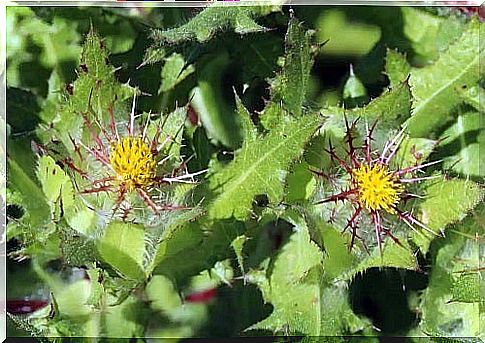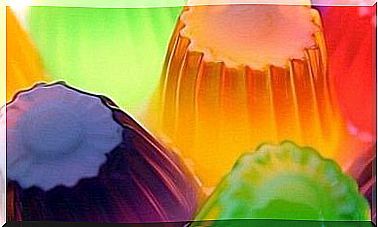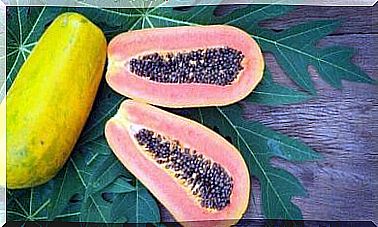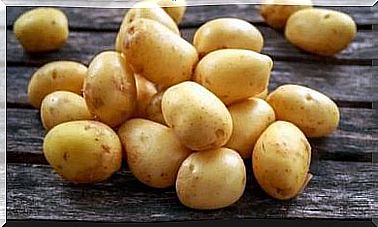Properties And Uses Of Schinel

Schinel (Cnicus benedictus) is a flowering plant belonging to the Asteraceae / Compositae family . It comes from the Mediterranean region, although today it is distributed in regions of the United States, Australia and South America. What are the properties and uses of the shinel?
The plant is characterized by its hairy leaves, which resemble those of dandelion. It also has a branched stem and yellow flowers, which are often used for medicinal purposes. Not to be confused with milk thistle (Silybum marianum), which is often used as an adjunct in liver disorders. So what is it for? We will explain below.
Properties and uses of the schinel
A 2016 study states that schinel (or bitter grass) contains sesquiterpene lactone glycosides, triterpenoids, lignans, flavonoids, tannins, essential oils, trace elements and other substances with pharmacological potential. Due to this, it is attributed antimicrobial, anti-inflammatory, healing and digestive properties.
Among other things, it contains an active compound called cnicin , which in addition to giving it a bitter taste, acts as an antibiotic, hypoglycemic, diuretic, cholagogue and antitumor. However, there are not enough clinical studies to determine the effectiveness of this plant against many diseases in which it is used. Therefore, schinel should be used with caution.
Lactation
In natural medicine, schinel is often suggested as a galactagogue, ie a stimulant of breast milk. According to popular literature, the plant stimulates the production of prolactin or oxytocin, key hormones for breastfeeding. However, there are no medical studies to prove this mechanism.
A review published in the Ochsner Journal talks about the history of using the schinel as a possible galactagogue. However, more clinical trials are needed to determine if it really works.

Digestion
Due to its cinchine content, this plant can be helpful against digestive difficulties. As explained in a study published in the Journal of the Chemical Society , this substance stimulates the production of saliva and gastric acid. Therefore, its consumption could contribute to the digestive process and the prevention of gastric diseases.
Cough
Tannins, like the volatile essential oils of the plant, seem to act as expectorants. For this reason, schinel is used as an ally to dilute excess phlegm. In this sense, there are no scientific data. However, it is thought to be an adjuvant against respiratory infections.
Bacterial infections
The antimicrobial properties of schinel are used for the prevention and treatment of bacterial infections. Research suggests that they may inhibit the growth of common bacteria, such as Staphylococcus aureus.
Similarly, a study published in the Journal of Medicinal Chemistry shows that the cyncine contained in the plant slows down bacterial proliferation because it blocks the enzymes that allow replication.
Uses of the shinel: other lesser known uses
Traditionally, schinel has other applications in alternative medicine. However, there is no concrete evidence of these effects yet:
- Diarrhea
- Cancer
- Increased urine flow
- Diabetes
- Arthritis
- Hypertension
Risks and side effects of schinel
To date, there is insufficient information on the possible side effects of schinel. It is considered safe when used as a tea.
However, consuming more than 6 grams a day can lead to stomach pain, nausea and vomiting. The same goes for supplements and tinctures. Due to its composition, consumption is not recommended in the following cases:
- Patients with inflammatory bowel disease (Crohn’s disease and ulcerative colitis)
- Pregnant women
- BOYS
- Patients taking diuretics or antacids
- History of allergy to ragweed or related plants

Recommendations for the use of the shinel and presentation forms
There is no specific recommendation for the correct use of the shinel. Supplements often come in doses between 300 and 450 milligrams. Do not exceed 5 grams, as it can be irritating to the stomach.
Generally, tea is made with a teaspoon or two of dried herbs in a cup of hot water. Other forms of presentation are tincture, made in a base of alcohol or vinegar, and capsules.
What should you consider if you consume schinel?
The properties of the schinel have not been studied in detail. For this reason, herbal remedies are not approved by the Food and Drug Administration (FDA). You need to be careful when buying these remedies.
Similarly, if you have an underlying illness or are under medical treatment, it is best to consult a specialist. It should not be ignored that plant elements can interact with drugs or cause certain complications.









